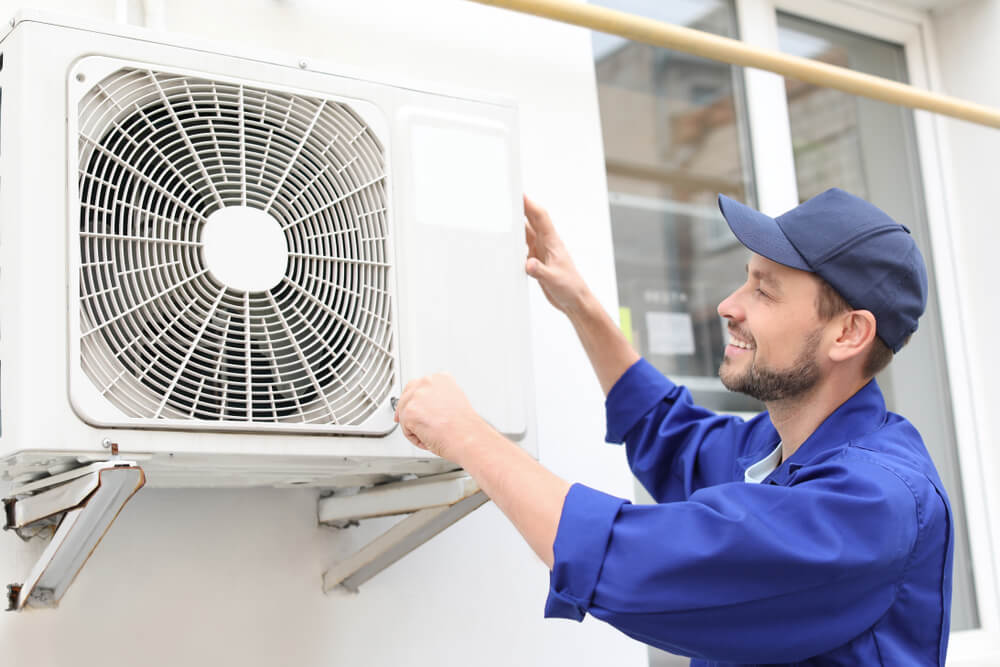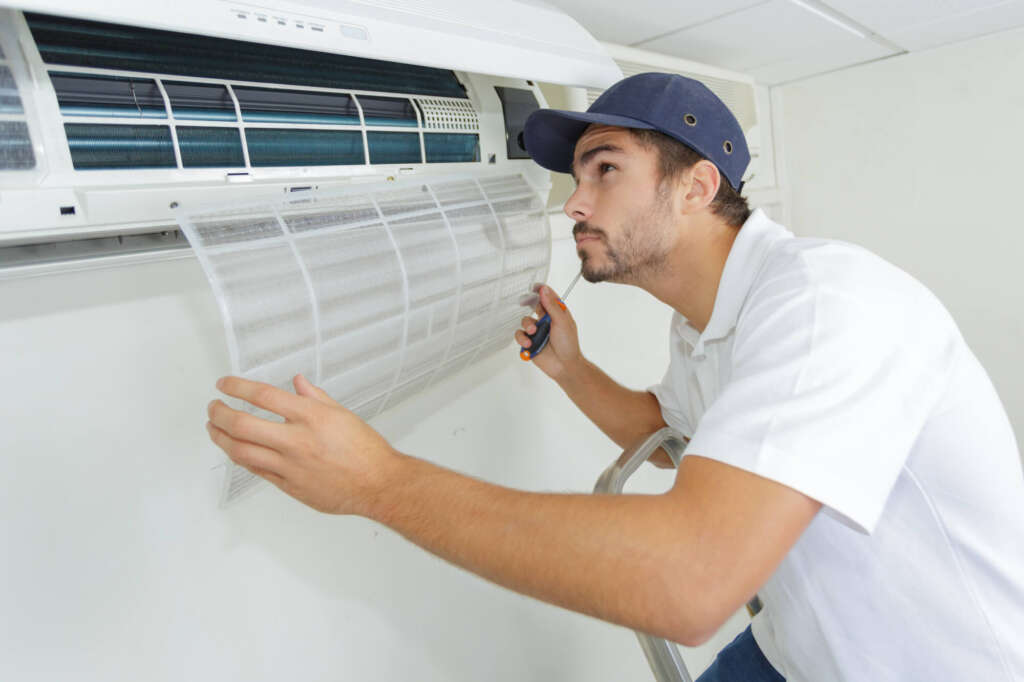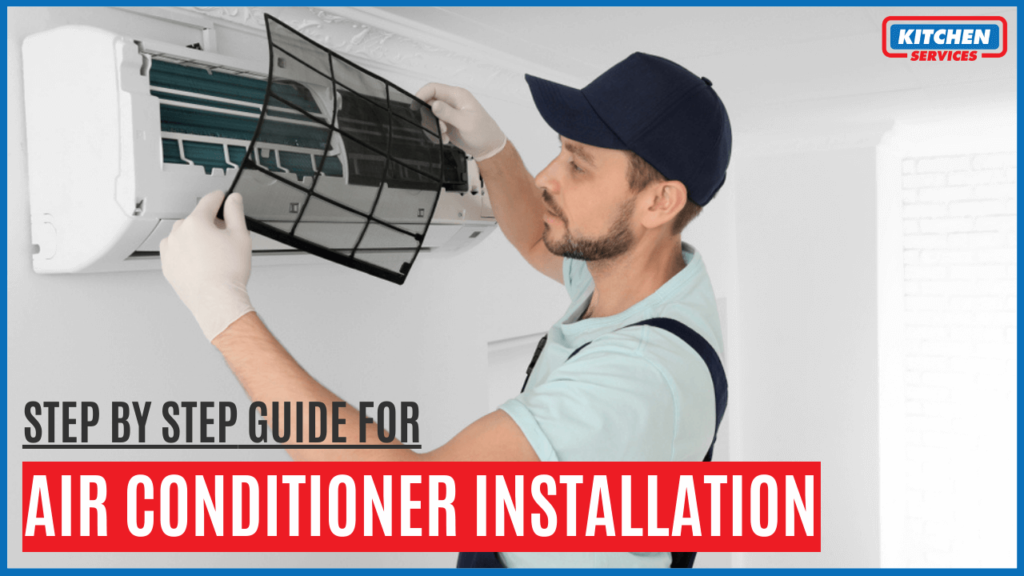Having an air conditioner in your home is as important as having a refrigerator and other important necessary machines. It is now considered a basic necessity which is a must need to bear all that scorching heat. In today’s date almost all homes, condominiums, and apartment buildings have their own fitted AC systems, and Air conditioner Installation is a huge task. Keep reading this Air Conditioner Installation guide to find out more.
Air Conditioning Systems
Air conditioner usually has a lifetime of about 10-15 years only if they are properly maintained and taken care of. In our homes we have installed air conditioners for a long time thus these old models are more likely to get damaged and other problems can also be caused by them like the usage of electricity more than it should have used. In this case, you may want to think about calling a properly certified air conditioner installation service provider and having an advanced and up-to-date AC installed, for whatever the reason may be. You must always remember that installing an AC system should be done by a fully licensed HVAC professional.
You cannot replace your air conditioner unit yourself. Even if you have little technical know-how to install your AC unit, all the electrical components add an elevated level of risk to the process. Moreover, you must have proper HVAC experience to make sure that you get the right unit according to the size of your house. Even though the installation process is performed by a qualified HVAC professional, there are some steps that you can do as a homeowner to get started.
Finding the right person for Air Conditioner Installation

Not one, not two but there can be many factors to look for while you are searching for an air conditioner installation professional. You might think that this step is not necessary, and you can go on with someone your friend or relative has known for just once, there has to be a very careful understanding that goes into picking the best person for you. If you have no clue about where you should start, the best option that we recommend would probably be suggestions from all the people you trust with all your heart.
In addition, you have to make sure that you find an installer who is from your area and provides his services to the area where you currently reside. It is useless to get a recommended and incredible installer, and you find out that they do not provide services in your area. In the end, you need to understand your pocket and what you have to pay for the installation of your air conditioner. After you have noted down your list of all the installers to 2 or 3 people, make them a call, and see by yourself which one suits you the most.
Selecting one of the best Air Conditioner Units
There can be a lot of different kinds of air conditioners that you may select as all of them perform somehow related functions but in different manners. The kind of air conditioner that you choose to buy is dependent on how you want your AC to perform and in what area you are planning to place it. For instance, if you are looking for a unit that provides the service of both cooling and heating, you might go for that option that provides both of these functions and not just cooling. The place where you are going to install your AC is also very valuable in terms of selecting an air conditioner unit. If you literally do not have any idea about which option would be the best for you, you may ask your installer which one they would recommend for the purpose you need it for.
Preparing Your Home for Air Conditioner Installation
While you are installing the AC apart from watching the area for the air conditioner unit you also have to decide the area for the outside unit. While locating the perfect location for the outside unit, you have to make sure that the area where the outside unit has to be installed is safe from the sun. while the construction of our homes most of the outdoor units are already made weatherproof, never less sun damage can always cause the AC to not function properly. Always make sure that the larger fan is directed or facing away from your home and also that there is sufficient space around your AC for all the wirework. You will have to trim all those plants or bushes that may get in the way of your wiring system. Furthermore, the outside unit also has to be flat on the surface and protected. This step is very important to make sure that it does not fall over or bend when the winds are strong.
What to do with the previous Air Conditioning Unit
After you let your HVAC mechanic replace your old air conditioner with the new one, you must be thinking that you will discard the old one with all the other trash, but no. This is illegal in many parts of the world. All of the air conditioner units use a specific cooling chemical which is called refrigerant and this chemical can be very harmful to your environment. All of the older air conditioners have refrigerant that is ozone-depleting which can emit greenhouse gases. It is always advised that if your AC has run its course of action and you are considering having a new one, the old one should always be recycled. Throwing out your air conditioner is only possible if the refrigerant has been removed from it. DO NOT attempt removing it by yourself as it is a safety hazard and only qualified professionals are aware of the regulations for removing and disposing of refrigerant.
NFPA guidelines for Air Conditioner Installation

Before talking about NFPA guidelines for installing an air conditioner unit let us see what NFPA is. So, NFPA stands for National Fire Protection Association. The National Fire Protection Association (NFPA) is a worldwide self-funded and nonprofit organization that was founded in 1896, this organization is dedicated to eliminating any kind of haphazard like death, injury, property, and economic loss caused due to fire, electrical and related dangers.
How to install Air Conditioner?
Here is your step by step air conditioner installation guide:
Inspection
- The HVAC specialist assesses the home and determines a suitable air conditioner.
- Domestic or split systems are commonly chosen for households.
- Indoor and outdoor units with refrigerant pipes are installed.
- Newer systems may require more space than older ones.
Removing Existing Outdoor Unit
- Recovery machine and tank used to safely remove refrigerant.
- Wiring disconnected from old system for removal.
Preparing Pad for Outdoor Unit
- Replace old unit’s pads with composite pads for stability.
- The composite pad absorbs vibrations and reduces noise.
- Ensures outdoor unit remains level and minimizes potential damage.
Removing and Replacing Indoor Evaporator Coil
- A cased coil with an insulated cabinet is recommended.
- Panels provide easy access for repairs.
- The uncased coil requires preparation work on the supply plenum.
- Drain pipe considerations for uncased coil.
Removing and Replacing Refrigerant Lines
- Two copper lines for refrigerant travel.
- Old and new oils should not mix to prevent damage.
- Hangers installed to secure refrigerant lines.
- Low-voltage control wire connects thermostat to furnace and outside unit.
Setting Up Outside Unit
- Place condenser on composite pad.
- Inspect for damages and fit refrigerant lines in service valve.
- Melt copper lines for leak-free connection.
Installation of Filter Dryer
- Installed in condenser to absorb moisture and provide filtration.
- Positioned close to indoor coil’s expansion valve for protection.
Installation of Wiring
- Mount service disconnect box using existing power supply.
- Fused box recommended for overcurrent protection.
Condensate Drain Line Installation
- Primary and secondary drains connected to PVC pipe.
- Condensate pump installed if no floor drain available.
Testing
- Turn on air conditioner for 15-20 minutes to allow refrigerant flow.
- Commission unit to ensure proper functioning.
- Confirm everything is in good shape before leaving.
- Validates manufacturer’s warranty.
Common FAQs About Air Conditioner Installation
What is Covered by NFPA 90A?
NFPA 90A covers the construction, installation, operation, and maintenance of air conditioning and ventilating systems that include filters, ducts, and all other related equipment, to protect any life and property getting damaged from fire, smoke, and gases caused by fire or conditions having indicators similar to fire.
What is Covered by NFPA 90B?
NFPA 90B covers the installation, maintenance, construction, and operation of all those systems that are used for heating and cooling purposes, for example, ducts, filters, and all other equipment.
The standard will apply to any system that moves environmental air in:
- All those spaces that are less than 25,000 square feet.
- All the buildings are about three stories or taller.
- One or two-family homes
Other systems that are included in the standard are:
- Ventilation and AC systems that are incorporated with building construction.
- Approval testing.
- Air distribution, HVAC systems and components.
- Manual controls, smoke detection, wiring, smoke dampers and other controls.
Can I install an air conditioner myself?
No, you cannot replace your air conditioner unit yourself. Even if you have little technical know-how to install your AC unit, all of the electrical components add an elevated level of risk to the process. Moreover, you must have proper HVAC experience to make sure that you get the right unit according to the size of your house.
Can I move my AC unit to the side of my house?
For moving your AC unit to the side of your house. The high-voltage electrical, low voltage and reference lines have to be moved to the roof. For that, a stand must be added to the roof structure. A crane should be called to move the unit to the roof.
How many hours should AC run per day?
During a hot or humid day, the average air conditioning unit should run for about 15 or 20 minutes. After 20 minutes, the indoor temperature shall reach your preferred setting and the unit will turn itself off automatically.
When should I replace my existing AC unit?
The best way would be, for you should do it before your existing system fails and makes you rush to make a replacement choice. Luckily, there are a few signs that will indicate to you that it is time to start looking at your options, if your unit is more than 10 years old and it is not keeping up with your present requirements, you will notice a big increase in your cost to make it work or maybe it needs regular refrigerant refills as well. In some cases, a simple repair may be all that is needed.

